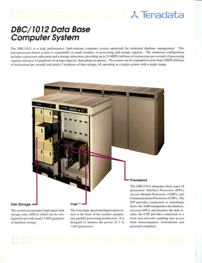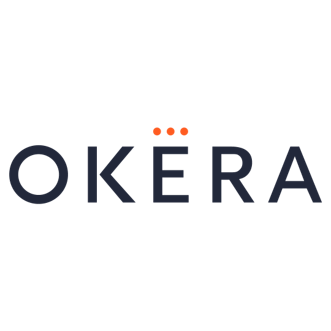
On October 27, 2022, Acceleration Economy conducted an online “Data Modernization Battleground” event, in which leading data tool vendors were invited to showcase their products before a panel of Acceleration Economy analysts. Here’s what we learned and my thoughts on the products.
First Up: Teradata
Imagine that! Teradata — one of the OG data storage/analytics firms that started out in the 1970s as a mainframe “database appliance” builder — is part of a 2022 cloud event! I remember the excitement we mainframe database geeks felt in the 1980s upon hearing that a database machine was being built to store and analyze a terabyte of data (a capacity first realized, according to Wikipedia, in 1992!).

It’s quite a story, involving numerous acquisitions and integrations of horizontal and industry-specific data analytics firms (plus an acquisition and spin-out of Teradata itself) and an eventual pivot from appliance builder to on-prem/hybrid/cloud Big Data analytics software-and-services firm. Today’s Teradata, while still offering on-prem hardware for clients that need it, bills itself as providing “Enterprise Data Analytics for a Multi-Cloud World.”
In the 40 years, I’ve known Teradata, across its many evolutions and re-inventions, two things have remained constant:
- “Enterprise” levels of service and customer support
- Deep knowledge
- of data storage/analytics
- of vertical industry regulations, terminology, and nuances
To most CIOs, the name Teradata means “expensive systems for solving really big data problems.” While that may have been true when they sold leading-edge, powerful, low-volume hardware appliances, the “cloud effect”— massive investments in standardized hardware by hyperscale cloud vendors — allows Teradata to focus on mid-market clients as well as their traditional enterprise accounts. And that’s great news for CIOs who need enterprise quality at a mid-market scale and cost.
Today’s Teradata focuses on their Vantage product line, a multi- and hybrid-cloud architecture that provides a “one-stop shop” for data analytics needs. Teradata’s Vantage environment means your database support engineers and data scientists can stop worrying as much about “where” data is located and spend their time focusing on how to turn big data into actionable information. And Teradata’s 40 years of experience supporting mission-critical applications at some of the largest firms in the most heavily regulated industries means that its products, backed up by its experienced consultants, can help mid-market and enterprise CIOs and data-science teams architect, install, and operate “information factories” that work for your industry and scale.
As a CIO, I’m happy to partner with a firm like Teradata that combines depth, breadth, and experience. And as an old mainframer who now embraces the cloud, I’m delighted that Teradata has kept the best parts of the old appliance builder as they adopted modern-cloud architectures to solve today’s problems.
Next, Okera
As a CIO who made a living “fixing broken IT (information technology) shops,” I’ve seen some genuinely awful data-security situations. A clue you have a problem is that adding a person to a team means custom-configuring security rules for their data access. This leads to inconsistent rules, overly coarse rules (“all payroll files” rather than “payroll files from Texas”), and rule sprawl (I once saw 9M security rules for a 3K person firm). And those problems prevent legitimate employees from being productive, allow unauthorized access to sensitive data, and drastically increase IT administration and audit costs. (Do you know how much a Big 4 partner charges?)
Cybersecurity is a board-level issue at most, if not all, firms. Here’s a newsflash to directors: Your CIO and CISO may be working hard and sweating details, but at most firms, their assurances that “we’ve got this under control” are more tenuous than you’d like (and one day soon will lead to a “derivative lawsuit” being won against some of you).
The enemies of security are complexity and access. If we have one database and one application, it’s easy. But real-world firms can have thousands of applications and databases (and each database can have thousands of data fields of varying sensitivity) and thousands of users who need varying access to those data fields and applications. Traditional data security controls were contained within each application and database, so making a change (adding a user or implementing a new policy restricting access) might involve hundreds of interactions across those myriad systems.
What if data owners and stewards (i.e., IT database and security administrators) had a central “dashboard’ that allowed them to monitor and manage data access rules across apps, databases, and clouds — the entire enterprise? To me, as an overworked CIO, that sounds like heaven! And that’s what Okera does.
Okera provides a comprehensive data governance environment. It allows an organization to discover and classify its sensitive data; implement and manage platform-agnostic data access policies; enforce those access policies in real time; and audit data access. Consolidated and coordinated data governance:
- reduces manual “one-off” and “emergency” data access requests (ask your help desk or security operations center how many of those it handles!),
- enables regulatory and compliance changes to be more easily and consistently applied across the enterprise,
- provides a defensive weapon to your cybersecurity team when a change must be made right now in response to an “incident” (the polite term for a possible attack),
- and lowers your audit and regulatory compliance burden (bet you don’t know how much you spend across the enterprise—but it’s more than you think!)
In the Acceleration Economy, organizations must move faster despite increasing threats from evildoers. Okera provides a platform that speeds up legitimate data access requests as it bolsters your security defenses. If you have this problem — and you do — check out Okera.
Want more insights into all things data? Visit the Data Modernization channel:











